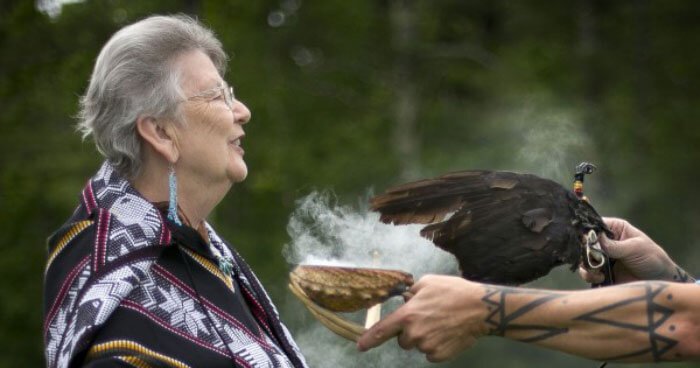The Science Behind Smudging : Here’s What Really Happens When We Burn Sage…
There is much subtlety to this practice, and its potency reveals itself in the experience as you work with it. Before we get started, it’s important to understand the deep symbolism that underlies each of the objects used in a typical smudge. There are centuries of wisdom woven into this process.
First and foremost, the materials involved each symbolize and honor one of the four elements, a central theme in many Native American rites.
The shell or clay bowl represents water
The herbs and resins represent the earth,
The feather and wind it creates represent air
The flame used to ignite the herbs represents fire.
THE HERBS:
Sometimes only one specific herb is burned, but often a carefully prepared mixture is created. The Cree people of Montana and Saskatchewan call this botanical blend a kinnikinnick, and it can contain up to 30 different plants, chosen for certain outcomes or to treat a specific illness.
The most common herbs used for smudging in North American traditions are white sage, sweet grass, tobacco, and cedar. Not surprisingly, these are also four of the most sacred plants in this part of the world.
“Sweet grass grows high in the Rocky Mountains. A gift from the creator, it is said this grass never dies. It is one of the great smells reminding us of the mountains and open air. Sage is the cleanest smell of the desert. It is also a present from the Creator. Tobacco is another gift. Our thoughts and prayers are carried on its smoke. It carries the two great smells of the mountain and desert. It is a visual representation of our thoughts and prayers being transported.” – John Joseph, Chinook Shaman
A SMUDGING PRACTICE TO TRY (WITH A NATIVE AMERICAN PRAYER):
A word to the wise: it’s important to hold pure and focused intention while you perform a smudging. Before you begin any purification ritual like this, make sure you’re fully present.
1. You’ll need: a clay bowl or abalone shell, a few leaves of your dried herb of choice (or a blend), a flame, and an open hand or feather.
2. Gently separate any stems or buds from the leaves of your dried herbs (only the leaves or blades are used in this process). Then place the leaves into your smudging vessel – clay bowl or sea shell.













1 Response
[…] the Treaty of Fort Laramie, the government tried to resolve the situation by asking the Southern Cheyenne to sign a new treaty that ceded all their lands to them except the small Sand Creek Reservation in […]